This article was co-authored by Joui Turandot. Joui Turandot is a Personal and Creative Branding Consultant and the Founder of JTM Consulting, a business that specializes in public persona branding, business branding, creative leadership coaching, and speaking workshops. Joui has more than 10 years of experience as a fashion designer, filmmaker, photographer, costume designer, stylist, and personal development coach. She uses her diverse experience to guide creative leaders and entrepreneurs through a journey of self-discovery and embodied personal expression to help them grow their business and step into the next level of leadership. Joui holds a BA in Media Studies from Mills College and holds credentials in the Somatica Core Training Method by the Somatica Institute and in the Art of Circling Training by The Circling Institute.
There are 10 references cited in this article, which can be found at the bottom of the page.
This article has been viewed 61,493 times.
Being creative is one of the most important elements of solving problems and innovating. Yet sometimes we have problems being creative. A lack of creativity can be frustrating and can sometimes limit your ability to excel in your career or personal life. But don’t worry, with a little work and a few helpful tactics, you can nurture your creativity and find new approaches to innovating and solving problems.
Steps
Feeding Your Brain
-
1Read extensively. Part of being creative is knowing enough about the world to understand how things work. Also, the more you know, the more perspective you'll incorporate into your own, and you'll be able to connect ideas that you might not have been able to do before. Reading is one of the best ways to expand your knowledge base and to broaden your perspective.
- Enjoy variety. Read on a lot of different things. This way, when it comes time to put your knowledge and creativity to the test, you’ll be able to apply your knowledge cross-field and cross-discipline.
- Read imaginatively. Don’t just focus on scholarly monographs or instructional materials. Spend time reading fantasy, science fiction, or some sort of genre that will help expand your horizons about what is possible.
- Read about things you don’t know anything about.
- Make reading a habit. Avoid falling into the trap of forcing yourself to read one book a week or one book a month. Instead, find books and other reading materials that you enjoy and put them everywhere. Use spare moments and downtime to explore these worlds of knowledge.
-
2Collaborate with others, especially if you work well with someone. Sometimes just talking through a problem or brainstorming with another person will help you move an idea along that has been stagnant in your brain for a little bit. In this event, find someone who understands the sort of problem or issue you’re trying to work through, they might have a different perspective that will allow you to solve the problem in a creative way.Advertisement
-
3Talk to people. Use any occasion to broaden your perspective by engaging new and different people. Interesting and different people are all around us. There is no telling how they will influence your creative instinct. Use opportunities like:
- Parties.
- Business meetings.
- Community events.
-
4Avoid activities that don’t challenge you or just reinforce what you already know or already think. A lot of people develop routines and commit large amounts of time to the same activities that they’ve always engaged in. These activities don’t really challenge you to think creatively and oftentimes won’t help you grow as a person. Think about minimizing the time you spend on the following:
- Watching television, specifically programs you watch all the time.
- Playing games or sports you’ve already mastered. If you’re a master chess or checkers player, and beat the computer or your friends every time, chances are that those games aren’t helping you grow. Consider different games or sports.
- Socializing with people who bore you or engaging in social activities that restrict your creative impulses.[1]
-
5Visit places that spur your own creativity. Sometimes we need stimuli that will feed our own creative impulses. There are a number of ways to get such stimuli, and they’ll likely be fun, interesting, and engaging. Consider:
- Art galleries, art fairs, or festivals. You’ll see many things you don’t normally come into contact with, and that might get you thinking about something new.
- Attend concerts, symphonies, or music festivals.
- Watch a play, an opera, go visit a museum.
- Attend a public lecture, talk, or a presentation.
-
6Spend some time in nature. Whether a walk on the beach or a ride down the nearest tree-lined boulevard, the power and beauty of nature can help anyone step back and look at the big picture. When in a positive state of mind, you might be able to see connections that you did not before.
Training Your Brain
-
1Embrace your failures. Failure is a necessary part of the creative and learning experience. Embrace it as such, and commit yourself to learning from your failures and your mistakes. This way, you'll grow to see every failure as an opportunity for improvement and innovation rather than an obstacle or a limit on your success.
- Creativity isn't something that you are born with or without. It's a skill that can be developed and a muscle that needs to be flexed. Thus, failures are just part of the growing and strengthening process.[2]
-
2Make a mind map that will help you visualize your thoughts. Sometimes we get ideas that seem to vanish before we’ve committed them to paper. Many thoughts are seemingly random and disconnected. Try drawing a mind map on a piece of paper. Now, because you can see your ideas, you might be able to understand them and their relationships better.
- List your seemingly random ideas.
- Pick some of your most intriguing ideas, and write them on various places on a sheet of paper. Place them according to how you think they are connected.
- Draw lines connecting ideas.
- Draw spur lines of important ideas and connect them to lesser ideas.[3]
-
3Reserve some time alone so that you can think about stuff. Taking a little time to contemplate the world or to reflect on things will help expand your horizons. Spending time alone will also enable you to consider problems you’ve been trying to work through and find new solutions that you might not have thought about before.
-
4Dedicate yourself to having an open mind. Having an open mind will enable you to think about problems that you might not have thought about before. You’ll also be able to engage ides and ways of doing things that you were previously hesitant about.
- Part of this is accepting the position that there are often many ways to solve a problem or achieve a goal.
- Accept that there are many ways to view the world. Then you can see that there are many ways to be creative and solve problems.
- Understand that you don’t know everything, and every activity is a learning experience.
- Consider unpopular or even “weird” ways of viewing things or solving problems. These unconventional ideas or views might just give you a creative spark.[4]
-
5Work with your hands and/or your head to create new things. Actual creating is the best practice to train your brain for creativity. There are a number of things you can do to train your brain in this way:
- Drawing. If you enjoy drawing, draw. It does not really matter if you think you're good at it.
- Writing. If you enjoy writing, write. Actual writing (fiction or non-fiction) is the best way to hone and develop your thoughts and your creative impulse.
- Build. If you enjoy building things, whether it be abstract art or basic carpentry, you should build. This will stimulate your creative juices, and you might wind up building something really cool![5]
- If you have any inkling of creativity, whether that's arranging your bedroom, cooking, or calligraphy, practice that too![6]
-
6Re-conceptualize problems. Try to get outside of your comfort zone and the “box” you typically function within. Think about a problem you are trying to solve in different ways. Embrace different perspectives, and maybe try to view the problem as an opportunity. For example:
- If your goal is to build a fence, think about the purpose of building a fence. Then focus on what you hope to achieve by building a fence. If you’re trying to keep deer from eating your prize flowers, maybe consider other options like spraying your flowers with organic soap to deter the deer.
- If you’re trying to solve the problem of fuel efficiency in car, perhaps think about it as a transportation problem instead. Instead of just trying to build a more fuel efficiency engine, you can scale down the size of a car or even identify alternate modes of transportation for people.
- Don’t fear starting all over if you think a line of inquiry or something you’ve been working on has failed you. Just start over and re-conceptualize.[7]
-
7Differentiate between creativity and productivity. Remember, being productive and creative are different. You just need to judge for yourself when you need to be creative and when you need to achieve productivity, or both.
- Someone can be highly productive while not being creative at all.
- Creativity entails finding new ways to solve problems and making or creating things that are unique.
- Productivity entails producing something, but can often be done in a non-creative and workman-like way.
Finding a Creative Time and Space
-
1Give yourself time to think. You can do this both before you start working and during your work. Dedicated “think-time” can only help you, especially if you’re having trouble finding creative solutions to long-standing problems.
- Spend a little time thinking before you start work.
- Take breaks throughout to think about what you’re doing.
- Whenever you meet an unexpected challenge, take a break to think about that challenge. Maybe you’ll consider a solution you hadn’t thought of before.[8]
- It's fine if you don't even know what you're going to do during this carved out creative time. The important thing is to let yourself be, and to let the inspiration come when it will.[9]
-
2Work at the best time for you. Studies have shown that people’s optimal times for cognitive capacity vary. Figure out when you think best and try to work and be creative at that time. Other studies have shown that some people are most creative at times when they are least productive in a conventional sense. Experiment and try to find out when you’re most creative and inventive. This is different for every person.[10]
-
3Construct a work environment that fosters creativity. Oftentimes the most structured and orderly environments don’t promote creativity. Try to create an environment that fosters your own personal creativity.
-
4Devote time to being creative, but don’t try to “plan” creative time. While sometimes new and innovative ideas might come to you when you’re occupied with something else, you should probably devote a little time to brainstorming and to working ideas out.
- Spend half an hour before bed thinking about things, if this works for you.
- Take a little time from your lunch to think about problems.
- Whenever you feel like your creative “juices” are flowing, stop whatever you’re doing (if you can), and work through those ideas.
-
5Avoid structure and routine all the time. While structure and routine are very helpful and can promote productivity, they might also stifle creativity if they dominate your existence. Instead, reserve structure and routine for when you must absolutely be productive, and allow yourself to be less structured at other times in order to nurture your own creativity.[13] [14]
-
6Enjoy limitations when it comes to creating. Limitations, in terms of time and physical supplies, can help spur creative solutions to problems. When it comes to problem solving or creating, enjoy the fact that you are limited by time and/or materials. Think about other ways to achieve your goal that might save time or supplies.
- Jeff Bezos said, "I think frugality drives innovation, just like other constraints do. One of the only ways to get out of a tight box is to invent your way out."
- Rules, constraints, and limitations force you to think creatively. So next time you’re blaming your manager or client for thinking too small, you should thank them.
Expert Q&A
-
QuestionHow can I have a creative mind?
 Joui TurandotJoui Turandot is a Personal and Creative Branding Consultant and the Founder of JTM Consulting, a business that specializes in public persona branding, business branding, creative leadership coaching, and speaking workshops. Joui has more than 10 years of experience as a fashion designer, filmmaker, photographer, costume designer, stylist, and personal development coach. She uses her diverse experience to guide creative leaders and entrepreneurs through a journey of self-discovery and embodied personal expression to help them grow their business and step into the next level of leadership. Joui holds a BA in Media Studies from Mills College and holds credentials in the Somatica Core Training Method by the Somatica Institute and in the Art of Circling Training by The Circling Institute.
Joui TurandotJoui Turandot is a Personal and Creative Branding Consultant and the Founder of JTM Consulting, a business that specializes in public persona branding, business branding, creative leadership coaching, and speaking workshops. Joui has more than 10 years of experience as a fashion designer, filmmaker, photographer, costume designer, stylist, and personal development coach. She uses her diverse experience to guide creative leaders and entrepreneurs through a journey of self-discovery and embodied personal expression to help them grow their business and step into the next level of leadership. Joui holds a BA in Media Studies from Mills College and holds credentials in the Somatica Core Training Method by the Somatica Institute and in the Art of Circling Training by The Circling Institute.
Branding Consultant First of all, appreciate the creativity you do have. Even something as small as redecorating a room or doodling cartoons is wonderful. Then, try new things—any activity or pursuit that's stimulating and helps you get your juices and creativity muscles going. People tend to look at creativity as something you are or aren't, but that's not the case. It's a practice like meditation. Hopefully, by regularly dedicating time to being creative, you can grow in this aspect of yourself.
First of all, appreciate the creativity you do have. Even something as small as redecorating a room or doodling cartoons is wonderful. Then, try new things—any activity or pursuit that's stimulating and helps you get your juices and creativity muscles going. People tend to look at creativity as something you are or aren't, but that's not the case. It's a practice like meditation. Hopefully, by regularly dedicating time to being creative, you can grow in this aspect of yourself.
References
- ↑ http://christinekane.com/21-ways-to-be-more-creative/
- ↑ Joui Turandot. Branding Consultant. Expert Interview. 4 June 2020.
- ↑ http://www.youtube.com/watch?v=5T7t5zi2Cmw
- ↑ http://www.sparringmind.com/creative-thinking/
- ↑ https://source.wustl.edu/2006/02/you-too-can-be-creative-it-just-takes-hard-work/
- ↑ Joui Turandot. Branding Consultant. Expert Interview. 4 June 2020.
- ↑ http://www.sparringmind.com/creative-thinking/
- ↑ http://www.sparringmind.com/creative-thinking/
- ↑ Joui Turandot. Branding Consultant. Expert Interview. 4 June 2020.
- ↑ http://www.forbes.com/sites/willburns/2014/08/13/science-continues-to-show-us-how-to-be-more-creative/#2f580ce2403c
- ↑ http://www.forbes.com/sites/willburns/2014/08/13/science-continues-to-show-us-how-to-be-more-creative/#2f580ce2403c
- ↑ http://greatergood.berkeley.edu/raising_happiness/post/7_ways_to_foster_creativity_in_your_kids
- ↑ http://www.creativitypost.com/create/101_tips_on_how_to_become_more_creative
- ↑ http://www.mycoted.com/Other_Peoples_Viewpoints
- ↑ https://medium.com/art-of-practicality/4-ideas-to-improve-your-creative-thinking-1dcc224dfba6
- ↑ http://www.sparringmind.com/creative-thinking/
About This Article
To be a creative thinker, you need to feed your brain, which you can do by reading about topics that interest you and things you know nothing about. If you need a fresh perspective on a new idea or problem you've encountered, collaborate with someone you work well with and get their thoughts on the matter. Once you've come up with some ideas, you can organize them by drawing a mind map where you list them out and make connections between them. Then, be sure to create, whether that be drawing, writing, building, or something else entirely. For more advice, such as how to find creative time and space, keep reading!


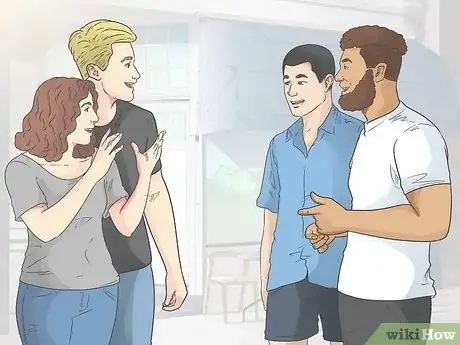
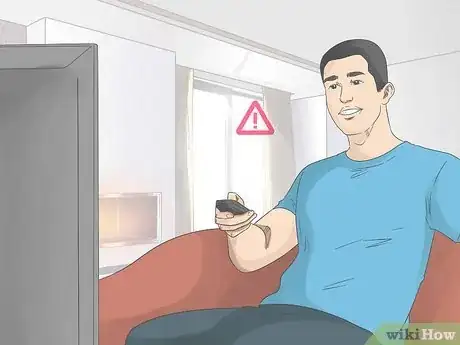
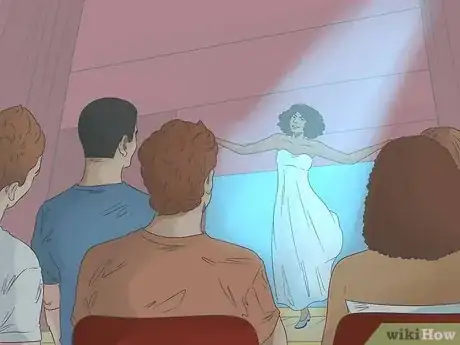
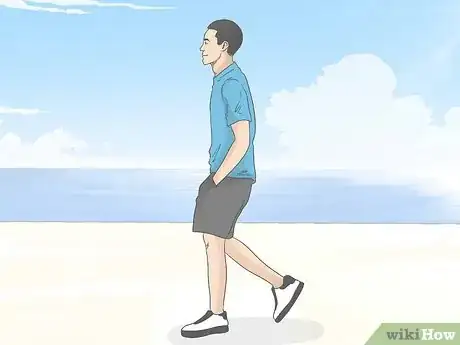
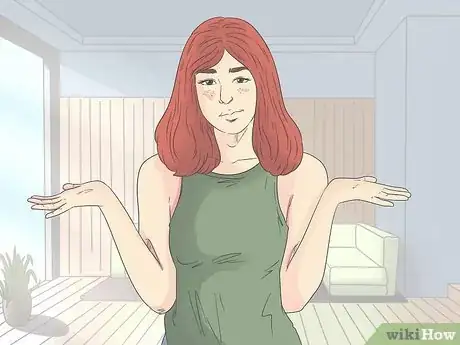

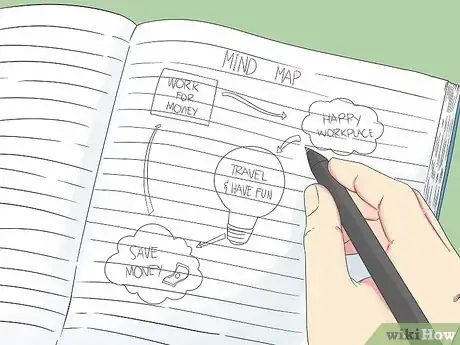
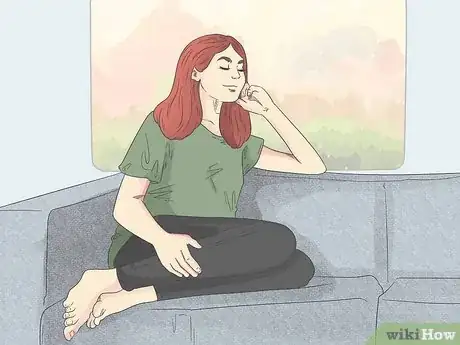
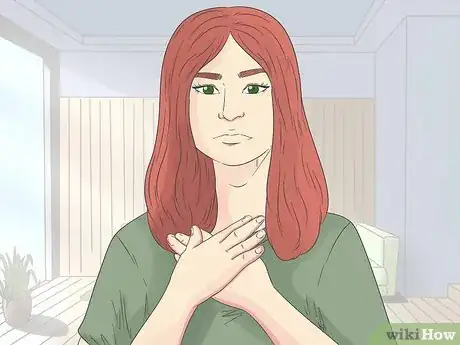

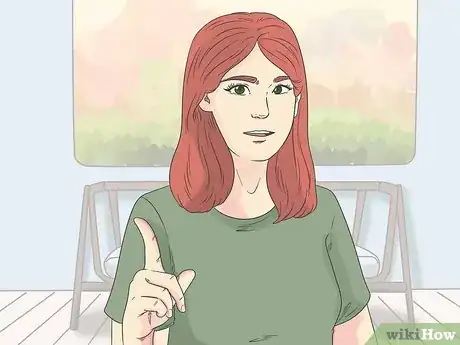
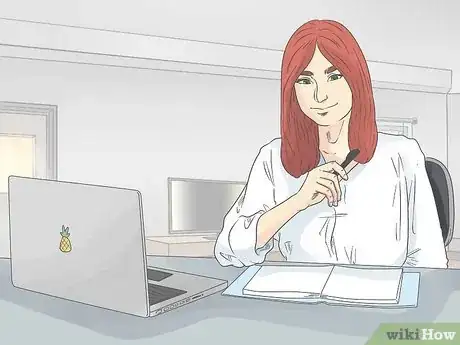
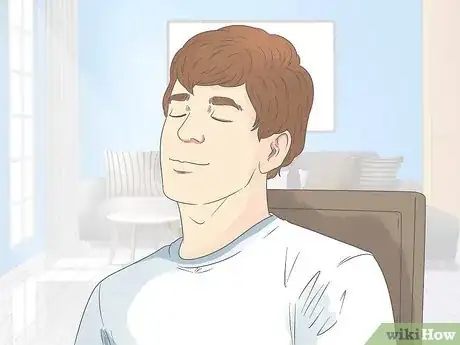

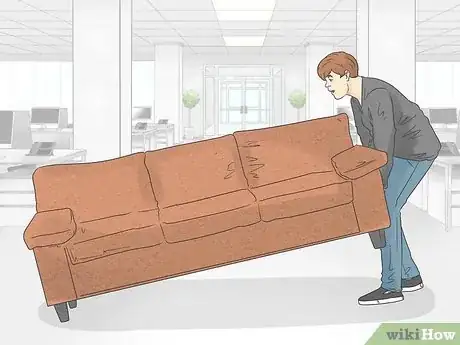
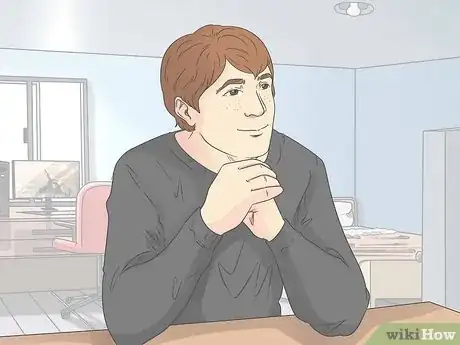

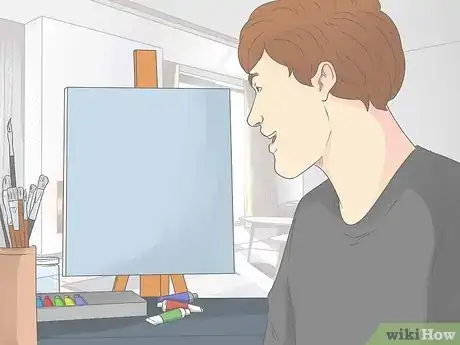
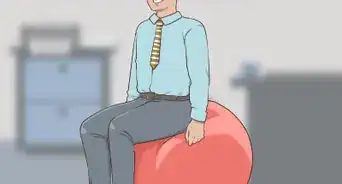

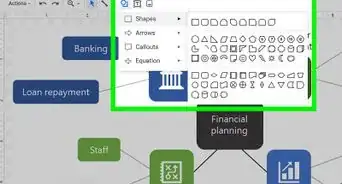



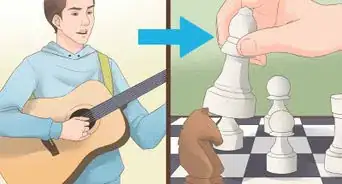
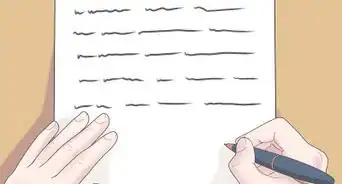





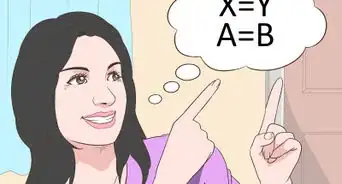








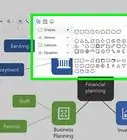




































Medical Disclaimer
The content of this article is not intended to be a substitute for professional medical advice, examination, diagnosis, or treatment. You should always contact your doctor or other qualified healthcare professional before starting, changing, or stopping any kind of health treatment.
Read More...